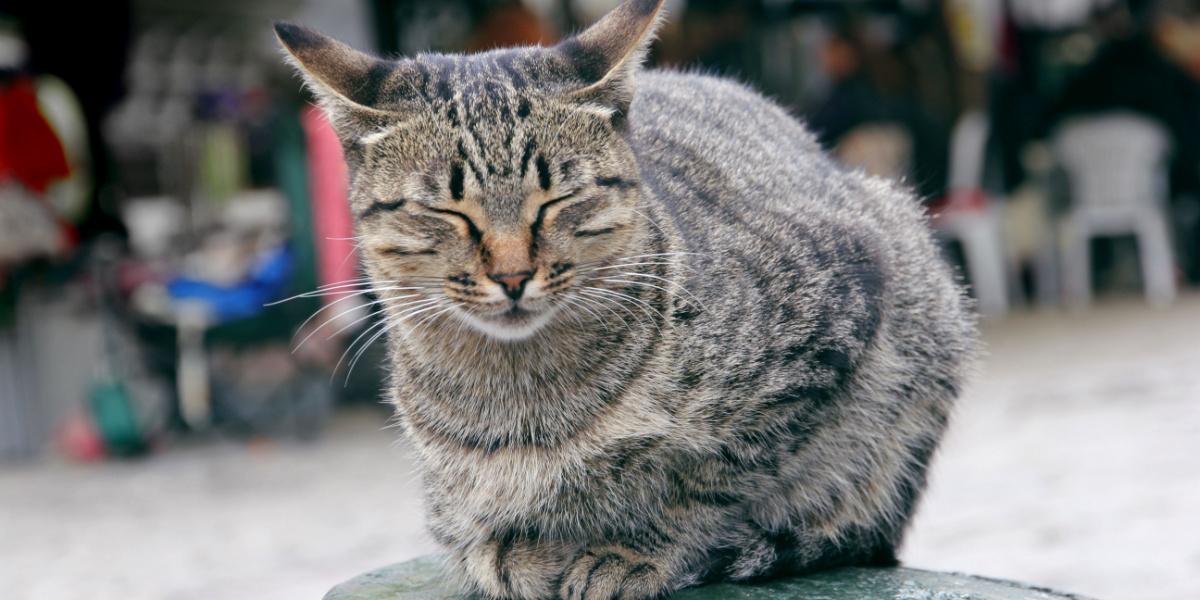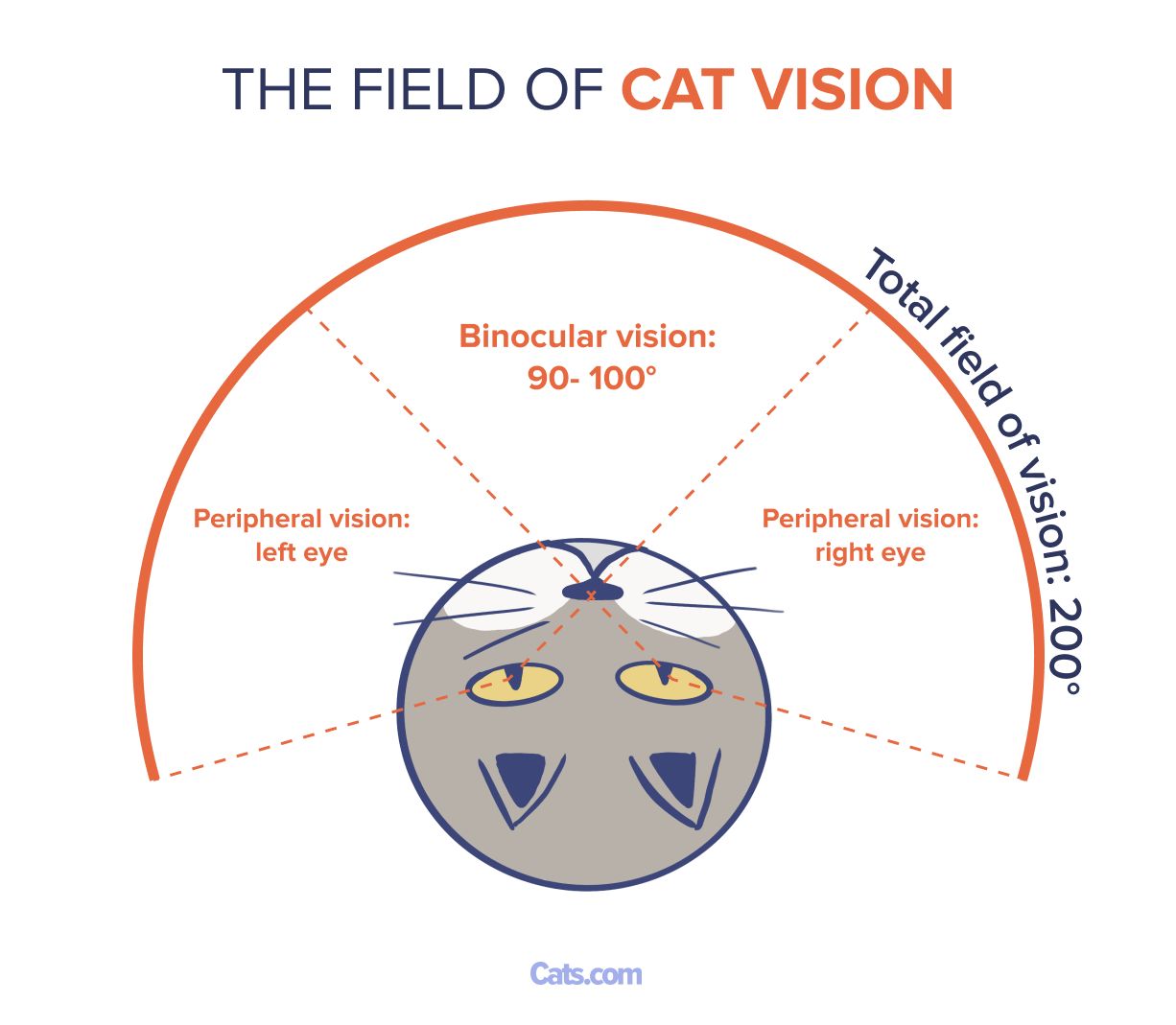
A cat’s eyes are the window to their health and soul signalling a broad range of emotions.
You’ll be fascinated to find out that cats don’t blink their eyes as often as people do although their eyes are practically as large as our own.
Let’s examine the feline eye, role of eye narrowing motion in cats and interpret what’s your cat’s eyes trying to tell you?
Cats blink as a form of communication, often to convey trust and relaxation Rapid blinking in cats is often associated with feelings of discomfort or fear Blinking slowly at a cat can help establish rapport and trust with themKey Takeaways
About the Feline Eye
Eye Structure
The feline’s eye is similar to a human’s eye; however it has many variations which enabled the cat to become an expert hunter in all types of light levels additionally at night-time. The basic structure of the cat’s eye is similar to humans holding same components: cornea, lens, iris, pupil, retina, optic nerve, orbit, sclera and conjunctiva.
Binocular Sight
The cat’s eyes are forward facing with both eyes working together focusing on the same visual target with depth perception helping in hunting precision when pouncing on prey.
Cats have reduced ability to see objects near their face, only capable to get a clear image of an object about 25-30cm away however competent to focus on items between two and six meters off from them.
Field of Vision
A cat’s eyes are very large compared to its body size, almost the same size as our own eyes; cat eye diameter is 22mm, while human eye is 25mm.
The large size of the eyes with the cornea bulging slightly from the skull gives cats a wide field of binocular vision of about 90-100°, together the binocular plus lateral fields of vision give the cat a complete range of vision of 200° equated to 180° in people which helps felines see prey in their environment.

Diagram depicting the field of vision of a cat by iCatCare©
Pupils
A cat’s pupils can open incredibly widely, about 3 times the dimension of a human fully dilated pupils. The substantial size of the eye with the enlarged pupil helps felines see in the dark and in low-bright levels like dusk and dawn, enabling it to hunt prey which are active at night.
Likewise, a cat’s pupil has the capability to be restricted to a really tiny size through a vertical slit of just 1mm wide when fully contracted, this is to shield the sensitive retina and prevent overstimulation in high light levels.
Felines may partly close their eyes in vivid light to limit the quantity of light entering their eyes.
Tapetum Lucidum
Added adaptation to assist our cats see in low light levels is a layer of reflective cells directly at the back of the retina called the tapetum lucidum.
This type of tapetum found in cats, dogs and other carnivores creates the ‘eye shine’ seen in cats when a light is glowed on them in the dark. It’s estimated that the tapetum increases the efficiency of light absorption by 40%.
Movement Detection
Cat’s eyes are extremely sensitive to the littlest movement, able to make rapid associations in response to moving objects in their environment. Remarkably, moggies don’t appear to be particularly good at detecting slow movements in contrast to humans.
How Often Cats Blink?
Cats don’t blink their eyes regularly like we do. A human being blinks between 15-20 times per minute to keep their eyes lubricated, healthy and protect them from dust/debris compared to a feline which may go for hours without their upper and lower eyelids meeting.
Cats Have a Third Eyelid
In fact a cat has a third eyelid known as nictitating membrane found inside the corner of the eye which closes diagonally across the eyeball when a cat blinks. The third eyelid offers protection to the eyeball while helping restore the tear film over the eye and keep them clean.
Unblinking Eyes
Cats are both prey and predators; they have to stay vigilant to their environment just in case of threats or for predation. Unblinking eyes are a benefit when assessing their surroundings as well as hunt for prey, blinking too often or closing their eyes is detrimental to their survival.
Eye Narrowing Movement
Lastly, the cat’s eyes are enclosed by an oversized circular muscle which when contracted causes narrowing of the eye such as a half blink where the upper and lower eyelids don’t press together.
What Cat Blinking Means

Cats slow or rapid blinking are often signs of experiencing positive or negative emotions through changes in the sub-neocortical areas of the brain
Cats experience positive and negative emotions through changes in the sub-neocortical areas of the brain by sensing and reacting to a stimulus with the exhibited behaviour linked to a specific emotion.
Slow Blink
Many cat parents often wonder why do cats slow blink? A recent study titled ‘The role of cat eye narrowing movements in cat–human communication’, published within the Journal Scientific Reports found that the slow blink is related to a positive emotional state.
Slow blink sequences usually consist of a series of half-blinks followed by either a protracted eye narrow or an eye closure (Humphrey, T., Proops, L., Forman, J. et al.2020). The slow blink is different from a regular blink and a quickened, exaggerated blink by both the frequency the blinking occurs and also the contexts during which it happens.
Sometimes one eye appears to close more than another, it’s known as “winky eyes” by some people. Both tests showed that slow blinking is a form of positive communication between humans and cats. You can help relax your cat by blinking slowly in their direction to make your cat feel more at ease.
Rapid Blink
Rapid blinking can be a sign of a negative or fearful emotional state. During rapid blinking, the eyes close quickly and the eyelids become closed shut causing crinkling of the skin on the cat’s face.
Typically a cat will avoid direct eye contact in potential conflict situations and when it’s terrified the blinking rate will intensify because of increased arousal. If the cat is intimidated by your presence, move away and watch their blinking behaviour change.
Remember to devour your feline with subtle slow blinks (cat kisses) which in turn will keep them relaxed and strengthen your human-animal bond.
Frequently Asked Questions
How long can cats keep their eyes open?
When cats aren’t napping, they can keep their eyes open for several hours without blinking.
Why does my cat never blink?
A cat that’s never blinking may be experiencing a medical condition like Horner’s syndrome, Dysautonomia, high blood pressure or feline cognitive dysfunction all requiring veterinary examination.
Should I blink back at my cat?
Definitely! By blinking slowly back at your cat, you communicate trust moreover you aren’t a threat. Blink gently but divert your gaze to one side to prevent seeming intimidating.
Do cats eyes blink?
Similarly to human’s cats blink their eyes, however not on regular basis. A slow blink that includes direct eye contact is typically a friendly sign, if it’s accompanied by calm body stance including purring, can signal happiness and relaxation.
What does it mean when a cat blinks at you?
Slow blinking is a form of positive communication between humans and cats. You can help relax your cat by blinking slowly in their direction to make your cat feel more at ease
-
Atkinson, T. (2018). Practical Feline Behaviour. Oxfordshire: CAB International page 28. Retrieved October 09, 2021
-
Care, I. C. (2020, Septmeber 15). Advanced Feline Behaviour for Vet Professionals, Module 4 What do I feel Part 5.3 The fear-anxiety emotional system (ISFM, Compiler) UK. Retrieved October 18, 2021
-
Care, I. C. (2020, September 01). Module 2: Senses and communication - vision and visual communication and how is vision used in communication. UK. Retrieved October 20, 2021
-
Care, I. C. (2020, October 14). Want to learn how to communicate with your cat? Retrieved October 22, 2021, from iCatCare: https://icatcare.org/sos-communicate-with-your-cat/
-
Humphrey, T. P. (2020). The role of cat eye narrowing movements in cat–human communication. Scientific Reports, 10, 16503. Retrieved October 15, 2021, from https://www.nature.com/articles/s41598-020-73426-0







